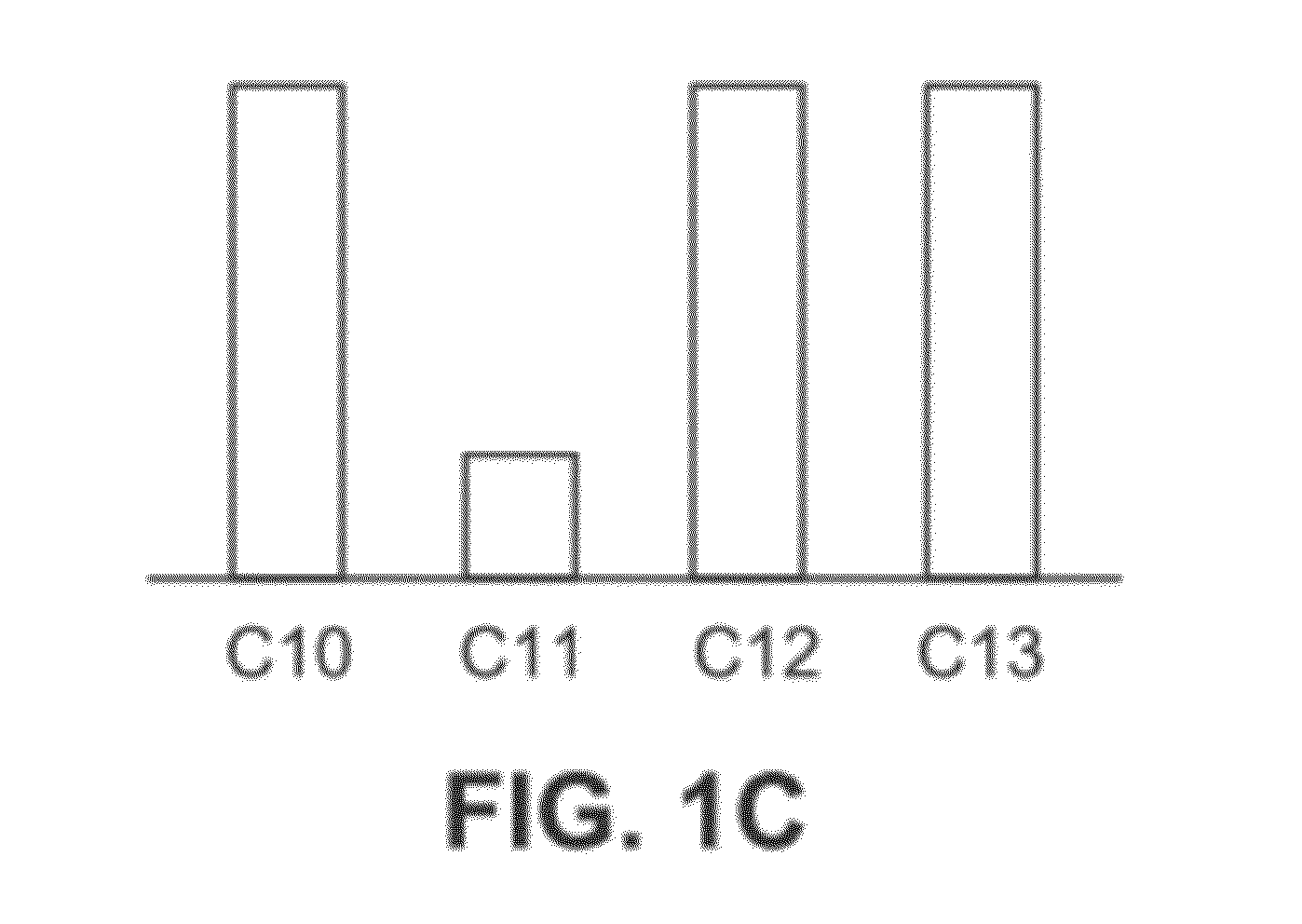Mixtures OF C10-C13 Alkylphenyl Sulfonates
a technology of alkylphenyl sulfonate and alkylphenyl sulfonate, which is applied in the direction of hydrocarbon purification/separation, hydrocarbon from oxygen organic compounds, non-ionic surface active compounds, etc., can solve the problems of less efficient builders, less liquid products without calcium control, and less calcium control
- Summary
- Abstract
- Description
- Claims
- Application Information
AI Technical Summary
Benefits of technology
Problems solved by technology
Method used
Image
Examples
example 1a
Synthesis of a Mixture of C10-C13 Alkenes Having a Bimodal Distribution with an Average Number of Carbon Atoms of 10.9 Via Alkene Metathesis
[0334]The metathesis synthesis procedure of US 2010 / 0145086A1 was followed using 1-butene and soybean oil methylester as the starting materials to provide a mixture of C10 and C12 alkenes that have a bimodal distribution after simple distillation. The ratio of C10 and C12 alkenes in the product was about 1.28 to about 1.00, corresponding to a chain average of about 10.9.
example 1b
Synthesis of a Mixture of C10-C13 Alkylbenzenes Having a Biomodal Distribution with an Average Number of Carbon Atoms of 10.9
[0335]The mixture of C10 and C12 alkenes from Example 1a is alkylated using any of the procedures in known in the art, such as, Alul et al., J. Org. Chem., 32(11):3365-3369 (1967).
example 1c
Synthesis of a Mixture of Alkyl Benzene Sulfonates of C10-C13 Chain Lengths Having a Biomodal Distribution with an Average Number of Carbon Atoms of 10.9
[0336]The mixture of C10 and C12 alkylbenzenes from Example 1b was sulfonated using following procedure.
[0337]The molecular weight of the alkylbenzene was determined by proton nuclear magnetic resonance. A measured amount of alkylbenzene was placed into an NMR tube along with a measured amount of dimethyl carbonate (DMC). The amount of DMC was calculated to provide approximately the same molar quantity of protons as the phenyl protons on the alkylbenzene. The molar quantity of the phenyl protons was determined by comparing the integrations of the alkylbenzene and the DMC. The grams of alkylbenzene per mole of phenyl groups was determined, followed by the molecular weight, which was 237.6. The alkylbenzene should contain less than 1000 ppm of water. If the alkylbenzene contains greater than 1000 ppm of water, it should be dried over ...
PUM
| Property | Measurement | Unit |
|---|---|---|
| Fraction | aaaaa | aaaaa |
| Fraction | aaaaa | aaaaa |
| Fraction | aaaaa | aaaaa |
Abstract
Description
Claims
Application Information
 Login to View More
Login to View More - R&D
- Intellectual Property
- Life Sciences
- Materials
- Tech Scout
- Unparalleled Data Quality
- Higher Quality Content
- 60% Fewer Hallucinations
Browse by: Latest US Patents, China's latest patents, Technical Efficacy Thesaurus, Application Domain, Technology Topic, Popular Technical Reports.
© 2025 PatSnap. All rights reserved.Legal|Privacy policy|Modern Slavery Act Transparency Statement|Sitemap|About US| Contact US: help@patsnap.com



